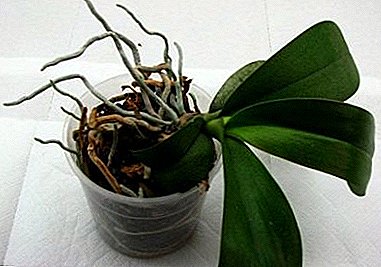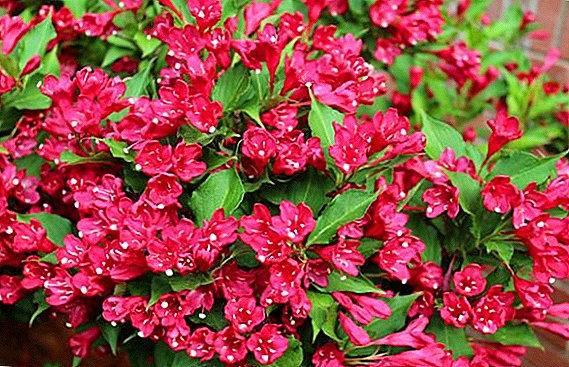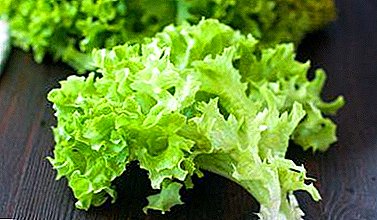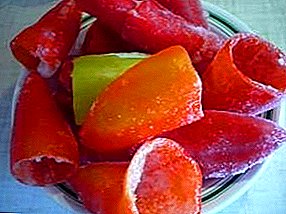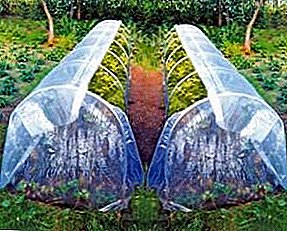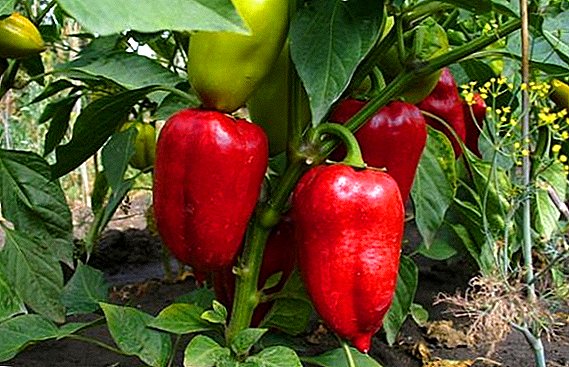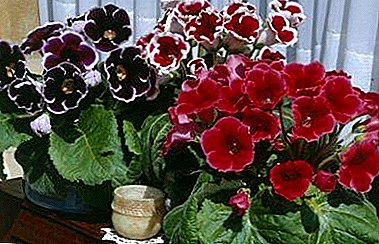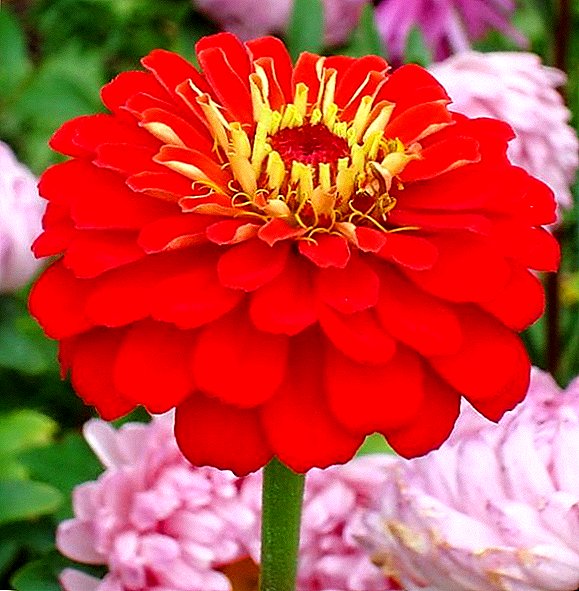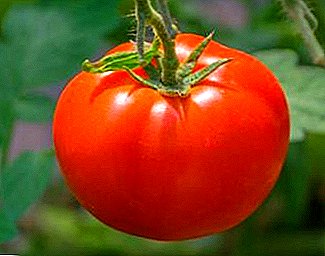 Chillies, spicy or bitter - it's all about the same vegetable, about pepper. It is good both as seasoning and as a separate dish. And it is useful, so you can not be afraid to moderately indulge yourself sharp. What is good vegetable and what is better to cook with it - find out next.
Chillies, spicy or bitter - it's all about the same vegetable, about pepper. It is good both as seasoning and as a separate dish. And it is useful, so you can not be afraid to moderately indulge yourself sharp. What is good vegetable and what is better to cook with it - find out next.
Briefly about the benefits of hot pepper
The product has a sharp taste due to the presence of capsaicin alkaloid. It stimulates hair growth, so infusions of pepper and its oils are used in cosmetology for hair care.
Important! Hot pepper promotes the production of endorphins - they reduce the effects of stress and increase mood.
In addition, it contributes to:
- accelerate blood circulation;
- improve digestion and increase appetite;
- increased immunity due to vitamin C and other elements;
- treatment of allergies, bronchial asthma;
- cancer prevention;
- treatment of radiculitis, arthritis and rheumatic pains.
Learn more about the beneficial properties of chili peppers, as well as red and bitter peppers.

Features of the choice of pepper for blanks
Both for harvesting and fresh consumption, you should choose a freshly picked vegetable. This will ensure the safety of vitamins and microelements. In addition, fresh fruit will be noticeably sharper - its burning juice will make the taste richer.
Determine how long the product was ripped off, you can by its tail - green, free of defects and dense speaks of freshness. If you break it a little, liquid will flow out. Bend the pod gently - it should gently bend, not crack. This also indicates freshness.
Buying pods without a stem is not worth it - as they deteriorate faster, and it is almost impossible to determine how long they are on the counter. The skin on them should be dense, free of defects, cuts and dents. Saturated bright color speaks of ripeness.
Important! Buy a product on the market from grandmothers - this will give at least a little guarantee that it will grow without pesticidal impurities. After all, this vegetable is in third place for the absorption of harmful substances into the peel, so it is better to protect yourself.
More often the fruit is sharper, the smaller in size. But the size should not pay special attention - a long pod can sometimes be more burning than a short one.  Any darkening, the presence of black specks on the fruit or its green pedicle speak of a fungal disease. Even one such fruit can ruin the entire portion of your conservation.
Any darkening, the presence of black specks on the fruit or its green pedicle speak of a fungal disease. Even one such fruit can ruin the entire portion of your conservation.
How to pickle peppers for the winter: a step-by-step recipe with photos and videos
With this dish, lunch or dinner will never be bland. And to prepare it is not difficult, the main thing is to stock up on ingredients and desire.
Kitchen utensils
Must have:
- rubber gloves - useful when cutting the fruit;
- knife;
- butchering board;
- a bowl or cooking pot;
- tank for measuring liquids;
- cans and lids (pre-sterilized).
Ingredients Required
 For 3 half-liter cans we need:
For 3 half-liter cans we need:
- hot pepper - 1 kg;
- sugar - 150 g;
- vegetable oil - 50 ml;
- salt - 1 tbsp. l .;
- water - 125 ml;
- Vinegar 6% - 190 ml.
Step-by-step process
- We take the washed fruits, cut off the stalk and cut into three parts - it will be easier to get the seeds and remove the partitions.
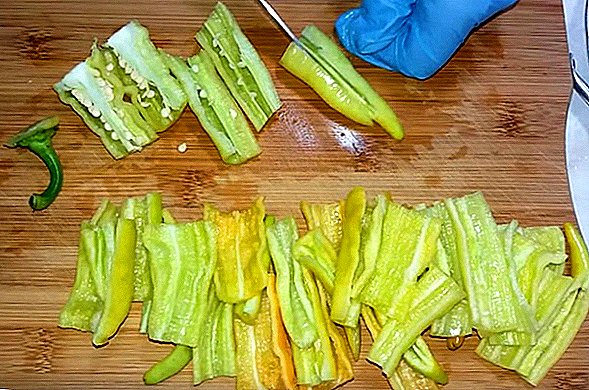
- When the fruits are cleaned - make marinade. Pour water into a saucepan or bowl, add sugar, salt, vegetable oil and set on fire.

- Pour the chopped vegetables into the boiling mixture, pour vinegar and mix.

We advise you to familiarize yourself with the recipes for the preparation of pickled green tomatoes, zucchini, watermelons, milk mushrooms, ryadovok, honey agaric, chanterelles and plums.
- Cover the cooking container with a lid and bring to a boil.
- 5 minutes keep boiling marinade over low heat.

- Turn off the fire and pour the marinade on sterilized banks. The liquid must completely cover the vegetables.
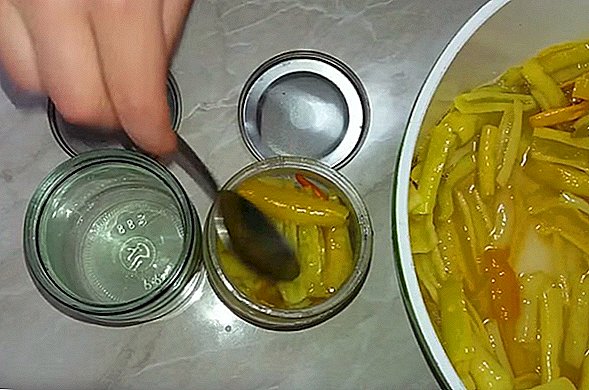
- Roll up or tightly close the cans with lids.
- Turn over the jars and cover them with a blanket to cool.
If you are a fan of this vegetable, you will probably be interested to get acquainted with varieties of bitter pepper for growing at home, as well as learn how to grow it on the site.Video: recipe for pickled hot peppers
Other Recipes with Hot Peppers
Marinating allows you to fully preserve the appearance and taste of the product. You can cook a more complex dish - for example, adjika. There are many ways to make a hot snack; We will talk about the Armenian version, which does not require cooking.
Caucasian adzhika
This appetizer is spicy due to not only pepper, but also garlic. For the preparation we need:
- hot pepper - 500 g;
- garlic - 100 g;
- coriander - 30 g;
- dill seeds - 10 g;
- salt - 250 g;
- Vinegar 6% - 20 g.

Cooking:
- We cut off the tails and, if we want to make the snack less burning, take out the seeds.

- Grind coriander and dill seeds in a coffee grinder. If it is not there, we buy already ground spices.
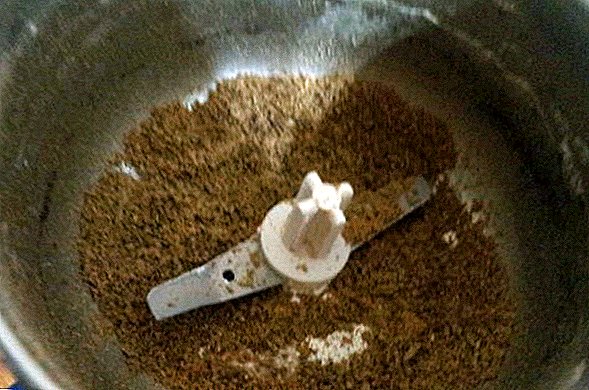
- Peel the garlic cloves.
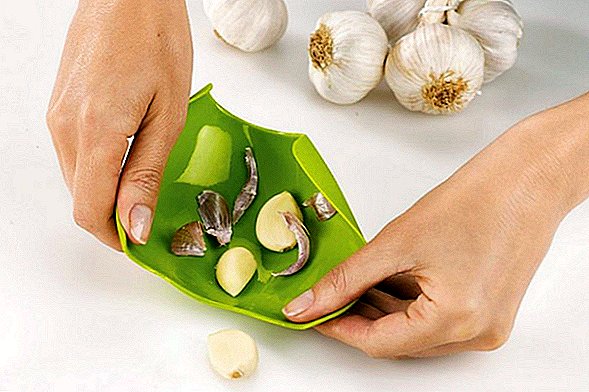
Did you know? In ancient times, black pepper was valued very highly and was often used as a tribute from conquered peoples. Once the inhabitants of ancient Rome, a ton of pepper bought off the attacks of the Huns and Visigoths.
- Prepared ingredients are passed through a meat grinder or blender.
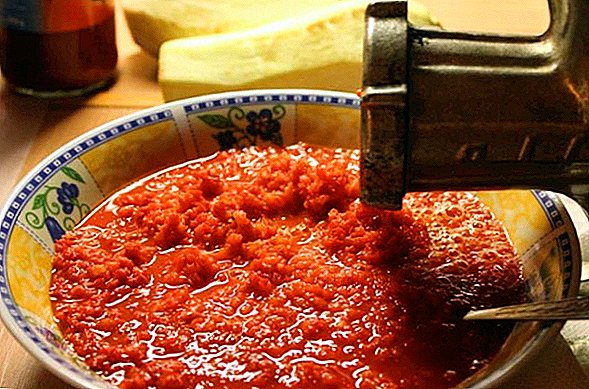
- Add seasoning, salt and vinegar.

- Well, all mixed and rolled into banks.
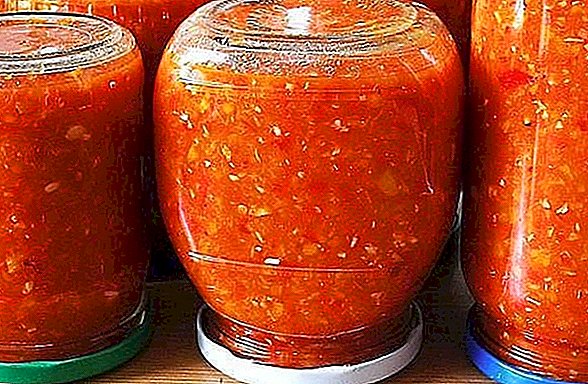
Bitter pepper in Armenian
This dish is prepared as a billet for the winter. These ingredients will be enough for 4 cans of 0.75 liters. Portions can be halved as desired.
We will need:
- hot pepper - 3.5 kg;
- garlic - 5 cloves;
- vegetable oil - 0.5 l;
- water - 0.5 l;
- Table vinegar 9% - 100 ml;
- sugar - 100 g;
- salt - 4 tablespoons without a slide.
Cooking:
- Fruits together with my tails and obsushivaem.

- Next, you need to remove the skin: you can boil the fruit for a couple of minutes in boiling water, remove it with a slotted spoon and immediately lower it into the cold, then remove the skin, cut off the tails and cut it in half.

- Cooking marinade - mix water, oil, sugar, salt and vinegar. Bring the liquid to a boil and dip the peppers in it. Boil on low heat for another couple of minutes and get fruit.
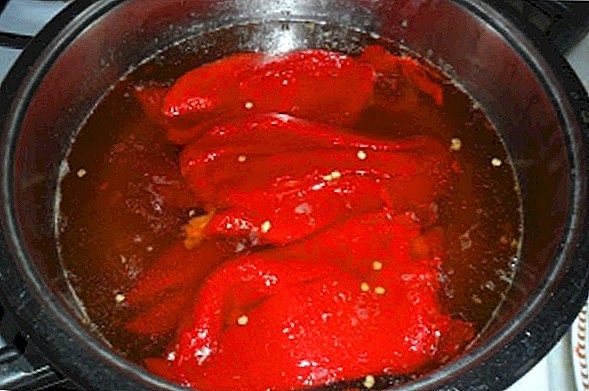
- Put garlic in the pre-sterilized jars on the bottom and fold the peppers tightly on top.
- Pour marinade.
- Lidding banks lids.

General rules and storage conditions for blanks
Rolled up blanks can be stored for several years. For this, a refrigerator, cellar or even a dark pantry will be suitable, where the temperature is not higher than 18 ° C. The main condition for preservation is the correct sterilization of cans and lids.
Familiarize yourself with the methods of harvesting pepper, onion, cabbage, parsnip, tomatoes, arugula, green beans, green garlic, white mushrooms, sorrel and horseradish for the winter.Open cans should not be kept longer than a week, so roll up the preservation in small portions. It is recommended to keep marinades and preservation only in the refrigerator under the plastic cover, not longer than 3 months. If the lid is swollen, and mold has formed on the workpiece - the product cannot be consumed.
What to serve with hot pepper on the table
Spicy snacks are well suited to meat and fish. Therefore, such a blank will be the decoration of any holiday table. Adjika and pickled peppers can be eaten simply with potatoes or porridge.  Marinades from vegetables are used to extinguish meat - then it turns out softer and tidier. Adjika can be used instead of pizza sauce.
Marinades from vegetables are used to extinguish meat - then it turns out softer and tidier. Adjika can be used instead of pizza sauce.
Did you know? India is considered the birthplace of pepper. More than 3 thousand years ago there were made the first records about this vegetable.
So, from the hot pepper you can cook a lot of options for snacks that will surprise the guests and diversify the usual meal. In addition, this dish will be useful - it will improve the appetite and speed up the digestion of food, which is important on holidays with long feasts.

















